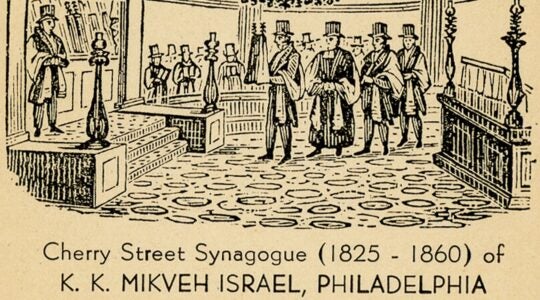(JTA) — Shemini Atzeret, the last festival in the fall Jewish holiday cycle, begins on Sunday night. For many modern Jews, Shemini Atzeret is obscure, confusing or irrelevant – but investing ourselves in the holiday can revitalize the spirit for the year ahead. Here’s how.
In 1993, the alternative rock band Crash Test Dummies released its second and most commercially successful album, “God Shuffled His Feet.” The lyrics of its title track begin:
After seven days
He was quite tired, so God said:
“Let there be a day
Just for picnics, with wine and bread.”
He gathered up some people He had made,
Created blankets and laid back in the shade.
Let’s hang out with this idea of just hanging out spiritually: “Let there be a day just for picnics with wine and bread.” How about an annual day dedicated to no-obligation spirituality, even without synagogues, liturgies and other religious formalities?
Some religionists may call this idea a farce: What’s so holy about “picnics with wine and bread”? Others call it dangerous, a nihilistic thin gruel that waters down real spirituality in favor of what’s easy or convenient. These critics already lament the quality of spirituality, given that less (or no) religion is now ascendant among liberal Jews generally and, in all religions, among millennials especially.
On the other hand, after three intense weeks – Rosh Hashanah, Yom Kippur and Sukkot – even joyfully observant Jews can feel like they’ve overdosed on religion. A “day just for picnics,” or yoga, hanging out, breathing (both literal and figurative) — anything gentle and fun that we embrace with intention to reboot – can be wise spiritually and religiously right about now.
That’s my vision of Shemini Atzeret, and it should be yours, too.

Rabbi David Evan Markus (Courtesy of Markus)
I’m not advocating a spirituality of hedonism or “lowest common denominator” ease: Shemini Atzeret offers important traditions for the shul-going set. After all, Shemini Atzeret is an annual “assembly of the eighth day” (Num. 29:35), an “atzeret” (hard stop) to Sukkot on which we do no work (Lev. 23:36) just like on Sukkot. While Shemini Atzeret adopts many Sukkot rituals and themes (for example, dwelling outdoors in a sukkah, gratitude, shifting uncertainty toward joy), Shemini Atzeret is “regel bifnei atzmo,” a separate holiday that’s equal to Sukkot, Passover and Shavuot.
Like other festivals, with Shemini Atzeret we associate liturgies of Yizkor (remembering the deceased) and Hallel (gratitude). Uniquely on Shemini Atzeret, liturgy shifts from its summer form (praying for dew) to its winter form (praying for rain). Really, there’s plenty to Shemini Atzeret if we want to go “by the book.”
But Shemini Atzeret has untapped potential precisely because this festival day invites us to leap over religious stridencies and directly touch the spiritual. The Slonimer rebbe (1911-2000) taught that Shemini Atzeret is the year’s happiest day, a pinnacle of joy when we dwell an extra day in the sukkah to just hang out with God without religious strictures.
Just as white light combines the rainbow of colors, so Shemini Atzeret is a blank screen onto which we can project all the joy of all other festival days combined. A blank screen – an empty day for just being – is just the reboot that Shemini Atzeret offers.
We can go even further. Rabbi Elliot Ginsburg teaches that by combining all the joys of the other Jewish festivals, Shemini Atzeret is the Jewish year’s joy capacitor, fueling the Jewish calendar’s spiritual circuit of time.
In a sense, the calendar’s spiritual circuit begins again the very next day after Shemini Atzeret, on Simchat Torah, when we ceremonially begin the Torah again with Creation and Genesis 1. If so, then Shemini Atzeret is both a personal reboot and cosmic reboot, inviting us to touch the primordial light of spirituality before there was any fixity – a time before time when, in mystical thought, all was divine.
We all need a breather now and again: Shemini Atzeret offers one at just the right time. So pack your picnic basket, yoga mat or tailgate supplies – and let God shuffle your feet to hang out for a good cause. Chag sameach.
Rabbi David Evan Markus is co-chair of ALEPH: Alliance for Jewish Renewal, the umbrella organization for the Jewish Renewal movement, and co-rabbi of Temple Beth-El of City Island. This essay is reprinted with permission from the Rabbis Without Borders blog on My Jewish Learning.
JTA has documented Jewish history in real-time for over a century. Keep our journalism strong by joining us in supporting independent, award-winning reporting.






